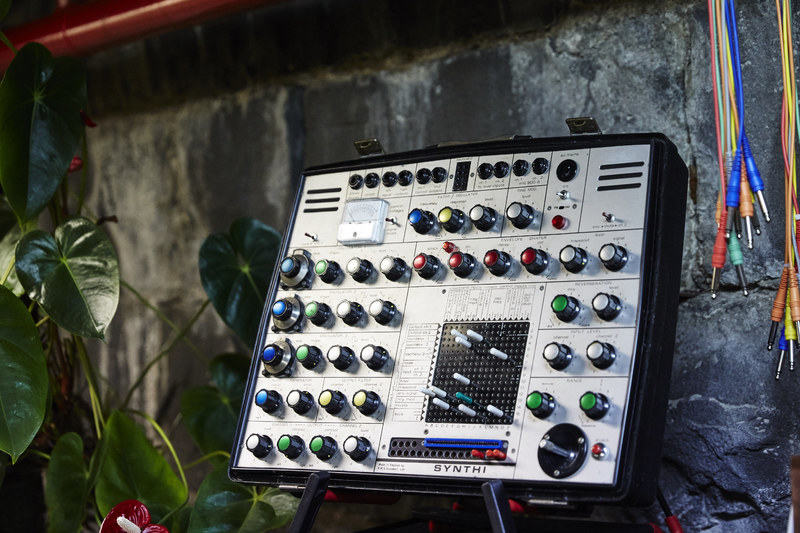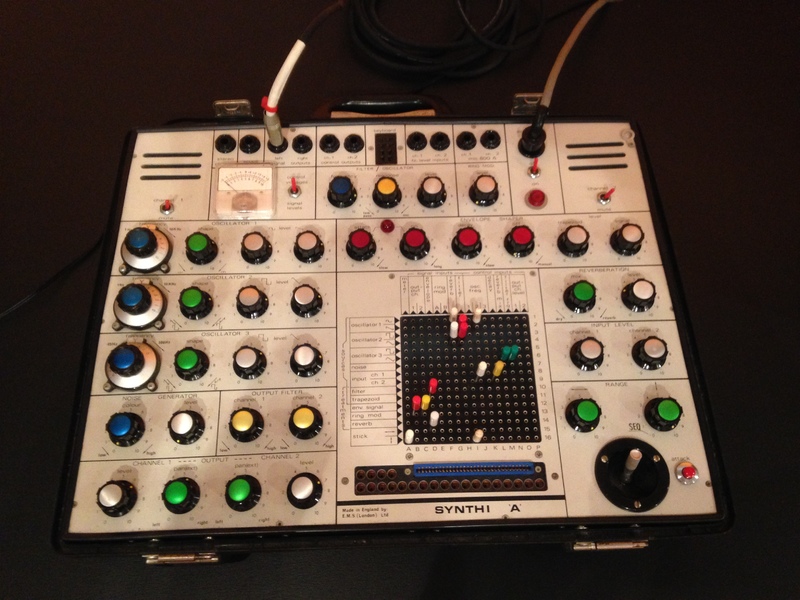Synthi A (Suitcase VCS3)
Dublin Core
Title
Synthi A (Suitcase VCS3)
Subject
Description
Electronic Music Studios, Ltd, London, Synthi A (Suitcase VCS3), 1971
Metal, plastic, electronic components
On loan from MESS Ltd
The Synthi A was designed for portability, and was built into a Spartanite attaché case with a carry-handle. This instrument allowed musicians to easily take their synthesizer from the studio to the stage. In 1972, EMS added a built-in touch keyboard and sequencer to the instrument, then called the Synthi AKS.
Pink Floyd used the Synthi A on the songs ‘Time’ and ‘On the Run’ on their album Dark Side of the Moon (1973). The German band Kraftwerk used the Synthi A on the 1974 album Autobahn. Jean-Michel Jarre featured the Synthi AKS on his albums Oxygène (1976) and Equinoxe (1978). Brian Eno, with his band Roxy Music, used the Synthi A extensively for avant-garde rock as well as ambient music.
Metal, plastic, electronic components
On loan from MESS Ltd
The Synthi A was designed for portability, and was built into a Spartanite attaché case with a carry-handle. This instrument allowed musicians to easily take their synthesizer from the studio to the stage. In 1972, EMS added a built-in touch keyboard and sequencer to the instrument, then called the Synthi AKS.
Pink Floyd used the Synthi A on the songs ‘Time’ and ‘On the Run’ on their album Dark Side of the Moon (1973). The German band Kraftwerk used the Synthi A on the 1974 album Autobahn. Jean-Michel Jarre featured the Synthi AKS on his albums Oxygène (1976) and Equinoxe (1978). Brian Eno, with his band Roxy Music, used the Synthi A extensively for avant-garde rock as well as ambient music.
Source
Photography by Kristoffer Paulsen
Date
1971
Contributor
Photograph courtesy MESS Ltd
Format
Instrument



